12 rogue sequels that dumped the original genre and gameplay
Risky business
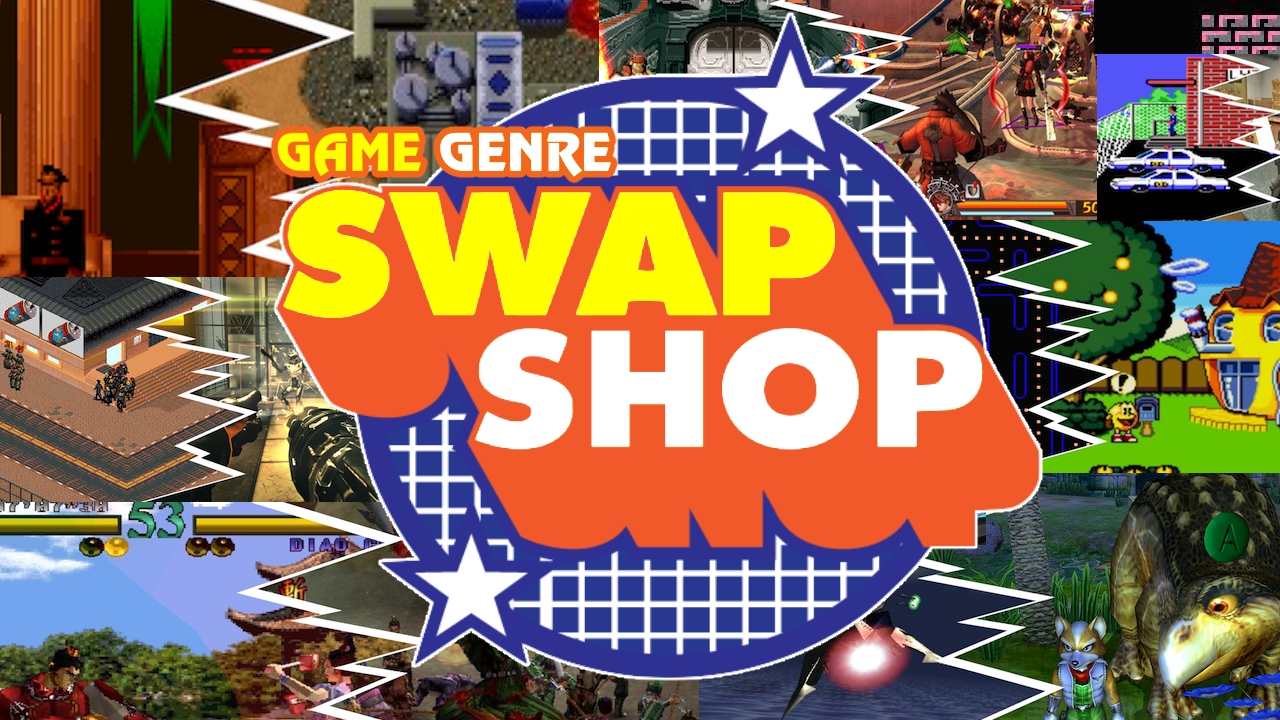
Thank heavens for the humble spin-off title, granting devs the opportunity to expand a franchise without risking the reputation of its more 'legitimate' cousins. Mainline entries can carry with them a major degree of prestige, meaning a risky dip into unknown waters is best left to a parallel, somewhat less 'official' additions to the series. Call it a test run, if you like - one that maintains a healthy distance between 'promising' ideas and the brand's more sacred cash cows. If nothing else, it makes for sound business sense...
Then there are the companies that throw caution to the wind, uprooting an entire franchise before plonking it back down in a strange new environment. The backdrop may stay the same, but the action most certainly doesn't. The following 12 titles all took a chance on change, refusing to iterate on an existing formula, switching instead to an entirely new genre. How did they do it, was it a success, and should the resulting games even be considered sequels? Click that there arrow icon and let's find out.
Criteria Check - Plenty of franchises transferred from 2D to 3D perspectives back in the 1990s. However, most of those games didn't attempt a simultaneous switch in genres. As such, more mechanical translations - i.e. 2D side-scroller to 3D action-adventure - have been nixed. And obvious spin-offs are out, obviously Enjoy!
Metroid/ Super Metroid to Metroid Prime

From this - A 2D action side-scroller, Metroid remains amongst the most influential games of its era. So much so in fact that the term 'MetroidVania' (i.e. Metroid + CastleVania) was specifically coined to denote titles of a similar style. Not many games that boast that, now can they?
To this - A fully-3D FPS title, Metroid Prime released to near-universal acclaim (the pirates of Tallon IV were a little less than complementary). Interestingly, Nintendo opts to refer to the Prime franchise as a series of 'first-person adventure' games, though it's a little less Myst and a shade more Halo.
A fitting sequel? - Those anticipating a 3rd person action-adventure were likely left stunned by the news that Metroid would adopt a new first-person perspective. It turns out that that decision was made by none other than Shigeru Miyamoto, who expressed deep misgivings over the quality of other 3rd person actioners. Thus, instead of taking the more obvious 2D to 3D route, Ninty handed the brand over to the folks at Retro Studios, plonking Samus and friends into an already existing project, that had itself once been played in the 3rd person. Fresh perspectives aside, Prime maintained many of the series' most critical hallmarks, serving not only as an excellent sequel but also as a brilliant adventure in its own right.
Warcraft 1-3 to WOW

From this - A critically acclaimed, commercially successful series of RTS adventures, WarCrafts 1 through 3 remain as some of the most well-loved and highly regarded games from the 'golden age' of real-time strategy.
Weekly digests, tales from the communities you love, and more
To this - World of Warcraft is more than just another MMO, it's the MMO - a game so stupendously successful, (not to mention ludicrously long-lived) that it's become something of a cultural touchstone. It's not for nothing that a small army of lesser games have all tried to pattern themselves as potential 'WoW killers'. World of Warcraft is the undisputed god-emperor of the genre, and it isnt going anywhere.
A fitting sequel? - While World may technically constitute an official spin-off (a big no-no here), the studio's blanket shift to the online format - as opposed to churning out both WoW and Warcraft games - should buy the title some additional 'sequel credit'. In truth, Blizzard's Heroes of the Storm does come closer to matching Warcraft's original gameplay (that's only to be expected when going up against an MMO). However, the game still manages to succeed as a sequel in almost every other respect, upping the scale, deepening the lore and offering whole new ways to play.
The SWAT (Police Quest) series
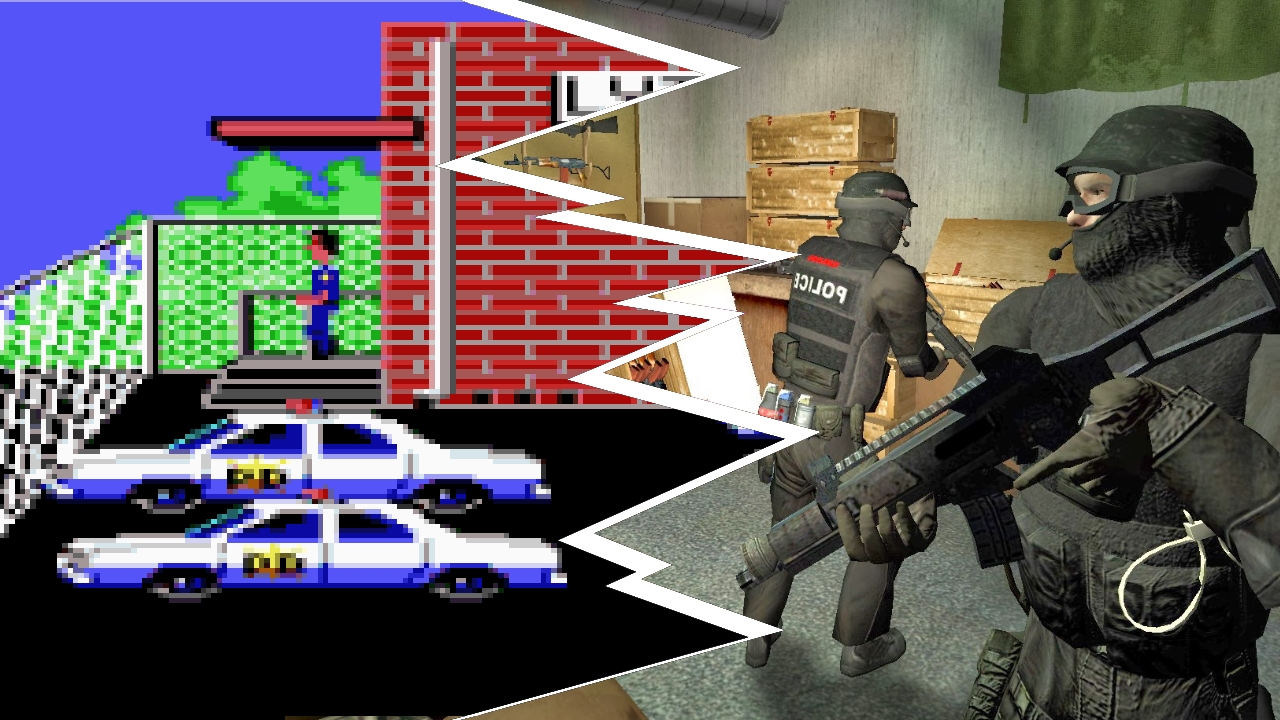
From this - Police Quests 1-5 are classic 2D adventure games. Entries 1-3 were masterminded by former police officer Jim Walls and starred the character of Sonny Bonds. Entries 4-6, meanwhile bore the name of former police chief Daryl Gates and featured a new lead named John Carrey. Gate's stewardship began a much grittier vision for the series, transplanting the action from the fictional setting of Lytton to the mean streets of L.A.
To this - Police Quest: SWAT (entry no. 5) played out as a barely-interactive FMV title, similar to the likes of Night Trap and Sewer Shark. These sequences required so much memory that SWAT appeared on four full discs.
To this - Police Quest: SWAT 2 is a real-time strategy game played from an isometric perspective. Players must select and coordinate a team of highly trained personnel in order to resolve a number of tricky hostage situations.
To this - Dropping the Police Quest moniker, SWAT 3 & 4 transformed into tactical FPS titles. Gates returned for entry number 3 as a consultant only, while characters Marie and Sonny Bonds received cameo roles in parts 3 and 4, respectively. Attempts by Jim Walls to relaunch the franchise via Kickstarter have thus far been unsuccessful.
Kid Icarus to Kid Icarus: Uprising
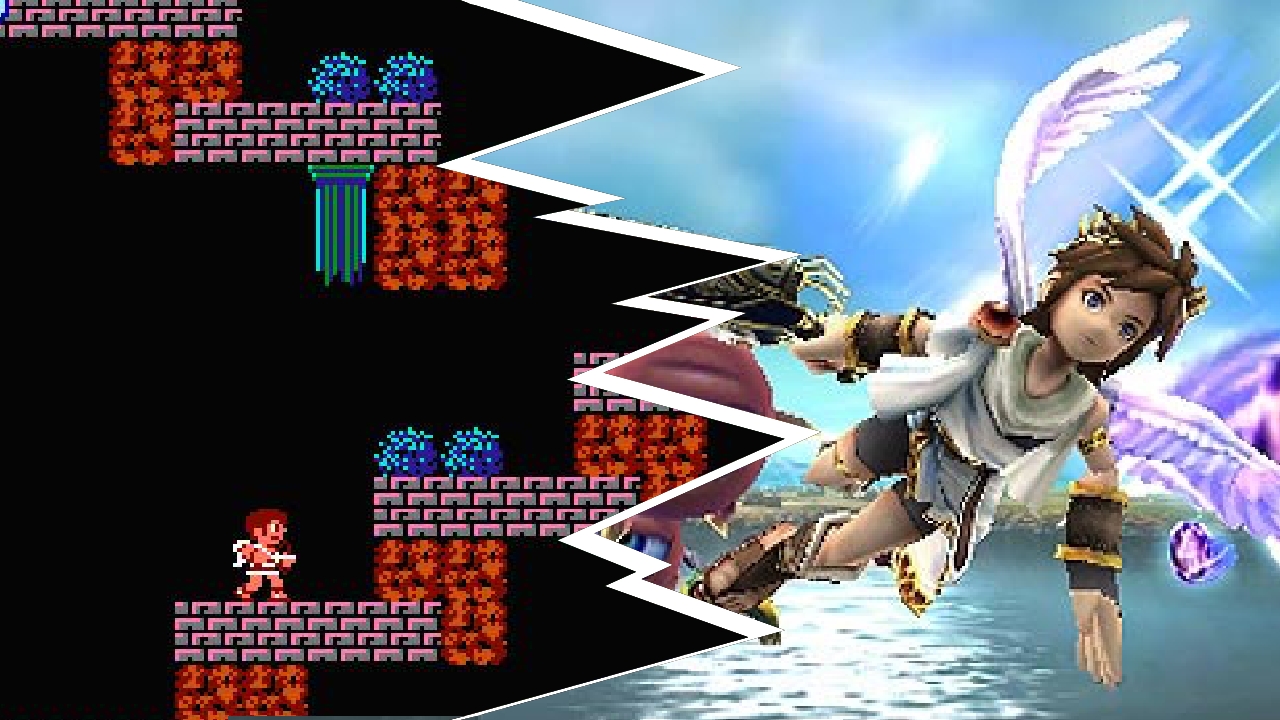
From this - A 2D action platformer released for the original NES. Kid Icarus met with a lukewarm critical reception, however the character of Pit soon proved popular enough to earn himself cameos in other Nintendo-made games.
To this - Kid Icarus: Uprising transformed the franchise into a on-rails 3rd-person shooter, utilising the 3DS' stylus input and a bundled stand peripheral for play. These major changes proved to be a success, as the game accrued far better reviews than its middling 2D predecessor.
A fitting sequel? - Uprising achieved far more than just strong critical reviews. It also worked to flesh out the game's undernourished narrative, granting Pit a proper personality and an actual reason to exist outside of all those cameos. Uprising had gamers enthusing about the franchise for the first time in a very long time, achieving perhaps the most singularly important element of any sequel - actually being better than it's ancestor.
Castle Wolfenstein/Beyond Castle Wolfenstein to Wolfenstein 3D
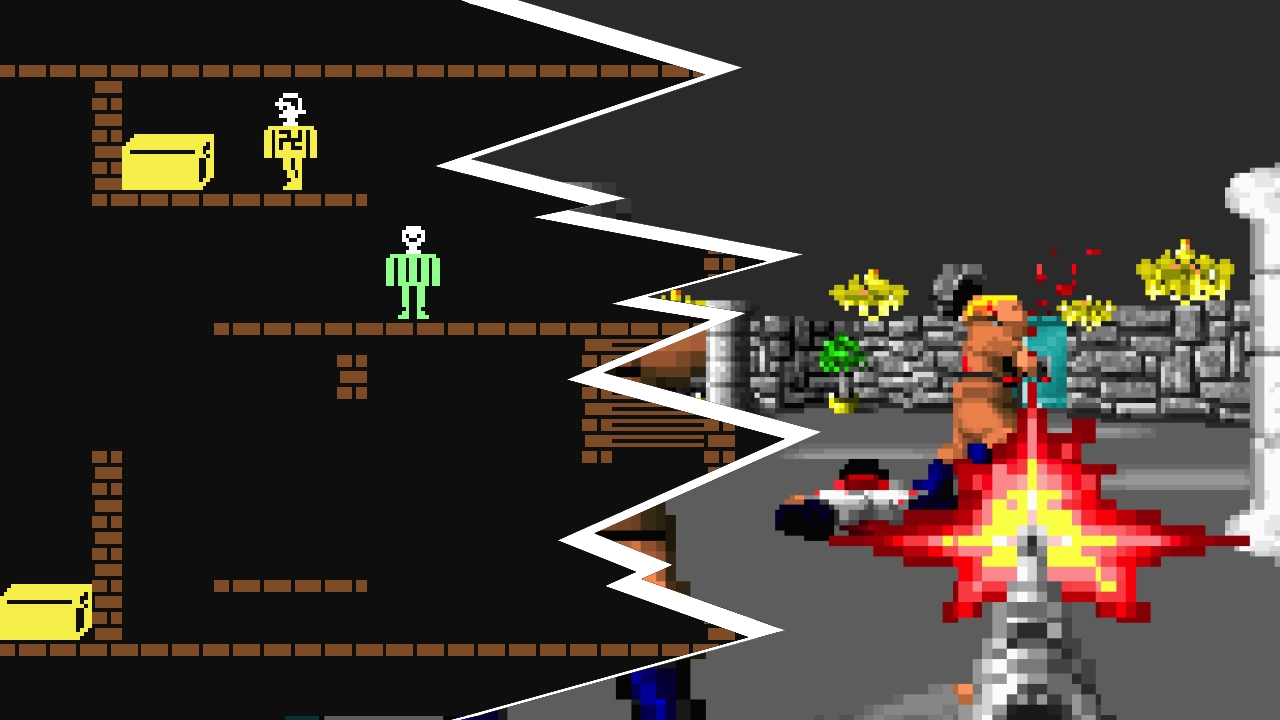
From this - A 2D stealth shooter originally released for the Apple II computer. Castle Wolfenstein was the very first title to take advantage of the World War Two setting. Fun fact - we're now nearly further away from the release of the original title than the folks making the game were from the war itself. *Head explodes* (36 years vs. 34).
To this - Wolfenstein 3D represented a major milestone for the FPS genre. Indeed, the title is often credited with being the very first game of its kind. Its success also helped to bring about the development of Doom, a more polished, ambitious and ultimately successful effort that spawned a whole host of imitators and ultimately, the modern FPS genre.
A fitting sequel? - As a sequel, Wolfenstein 3D bears few similarities to its stealth-based predecessor. Having closed down in 1987, original developer Muse Software had zero to do with the game's creation. While the Second World War setting was retained, almost everything else - from the game's genre to the use of supernatural elements - differed greatly from the original. Odd sequel, awesome shooter.
Jak & Daxter: The Precursor Legacy to Jak 2

From this - A light-hearted collect-a-thon intercut with occasional vehicle rounds. The Precursor Legacy built upon the success of Naughty Dog's Crash Bandicoot titles, utilising the power of the PS2 to craft larger, more interactive environments. A fun and accomplished platformer, with oodles of charm but little in the way of a compelling plotline.
To this - An angsty, dystopian sandbox title with the narrative to match. Jak II retained the run and jump elements of its predecessor, but added so much more to the mix as to become almost unrecognisable. Small, colourful locales gave way to bustling metallic cityscapes, with the only effective means of locomotion becoming one of the city's various hover-vehicles. Part skating game, part platformer, part run-and-gun shooter, Jak II effectively ditched the whimsy for a whole new toolkit.
A fitting sequel? - Fans of the platforming genre remain divided over the direction of the Jak & Daxter franchise. As a sequel, the game ticks all of the right boxes. It's bigger, more refined and certainly different enough to warrant its existence. However, the move into science fiction does come at the cost of The Precursor Legacy's unique 'feel' - an almost tranquil experience recalling the likes of Spyro the Dragon and Mario 64. As genre swaps go, platformer to platforming sandbox may not be the biggest of leaps, but it remains one step too far for some fans.
Star Fox/ Star Fox 64 to Star Fox Adventures

From this - An on-rails flight combat title. Star Fox successfully reinterpreted the 16-bit vertical screen shoot em up, bringing a brand new dimension into play. In addition, the original game's graphics were considered to be truly groundbreaking for their time, utilising an in-cartridge chip to boost the SNES's performance.
To this - A third-person action-adventure title. Star Fox Adventures exchanged Arwings for raving reptiles, grounding McCloud and forcing him to duke it out on foot. Originally conceived as an entirely separate title, Nintendo's Shigeru Miyamoto asked that the properties be merged after spotting the resemblance between Fox and the new game's hero.
A fitting sequel? - Roaming around a dinosaur planet doesn't exactly bear strong relation to a space-based dogfighting title. However, great efforts were made to integrate the new game into existing StarFox lore, rewriting much of Rare's game's narrative to account for Fox's presence. Fortunately, franchise canon already made mention of a dinosaur world, meaning the merger wasn't quite as crazy as it might well have seemed. On-foot missions would only go on to appear in one more sequel, before Nintendo wisely opted to chop that aspect entirely.
Pac-Man to Pac-Man 2: The New Adventures

From this - An all-time classic arcade title in which the titular Pac-Man attempts to munch as many pellets as possible without being tagged by one of four roaming ghosts. Simply put, it's a 2D action-puzzler set entirely within a maze. Oh and one of the most instantly recognisable games in the history of the medium. That too.
To this - Part 2D side-scroller, part point-and-click adventure game, Pac-Man 2 ditched the familiar neon maze of its predecessor to strike out into the world of Pac-Land. Players are now unable to control Pac-Man directly, though they can interact with the world around him, managing his moods so as to accomplish specific goals.
A fitting sequel? - As a spin-off title Pac-Man 2 might've made sense, but as a direct sequel? Not so much. Perhaps the problem lay with the fact that the original game invited way too many imitators, iterating on a formula to such an extent that all the good ideas had been utilised by the time Namco attempted a sequel. All told, Pac-Man 2 remains amongst the strangest of follow ups in video gaming history. Remove the iconic hero and you'd likely never know this was a Pac-Man game at all.
Dynasty Warriors to Dynasty Warriors 2 onwards
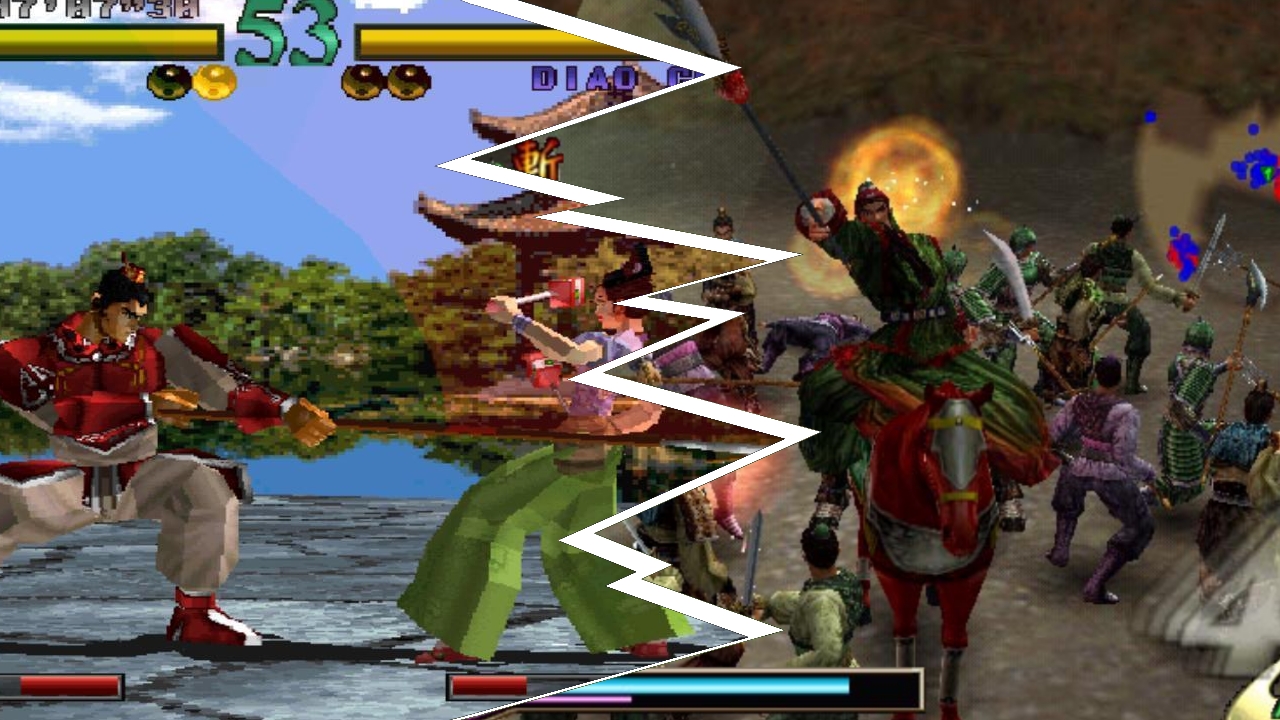
From this - A 3D fighting game that makes heavy use of weapons. Part Soul Calibur, part Bushido Blade, Dynasty Warriors tasks fans with parrying attacks in order to disorientate and counterattack foes.
To this - A series of tactical action games, Dynasty Warriors 2- through-one-thousand shifted focus away from single combat and onto gigantic foe-filled battlefields. Think of them as sandbox hack and slashers, with enough cheesy dialogue and outlandish armour thrown in to satisfy even the most ardent of Kingdom Under Fire fans. The series most recent release - Hyrule Warriors transplanted the game's winning formula over to the fantastical world of Hyrule - home to the ongoing Legend of Zelda franchise.
A fitting sequel? - Dynasty Warriors 2 retained both the characters and settings of its predecessor, but little else besides. Given the success of the franchise, not to mention the glut of competing fight games appearing in the era, it would seem that Omega Force's decision to switch gears was a wise one. An odd sequel, to be sure, but one that allowed the franchise to grow far longer than it might otherwise have done.
Dune to Dune 2: The Building of a Dynasty
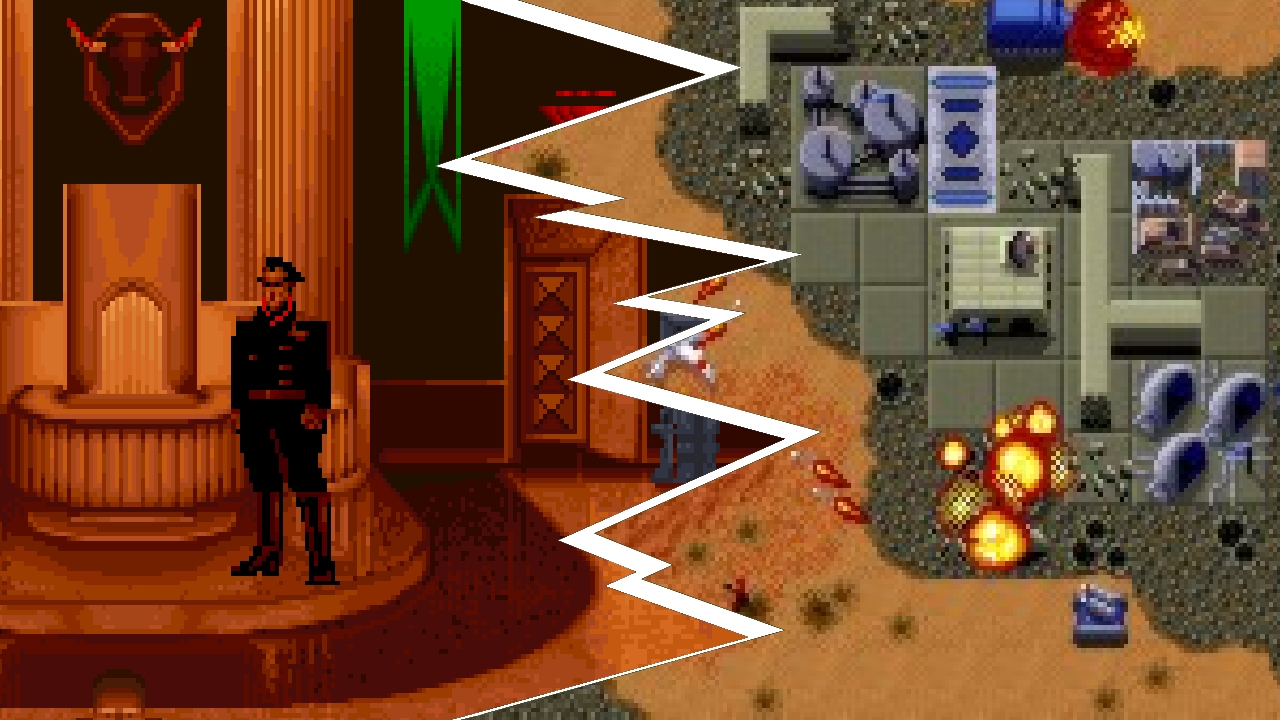
From this - A classic 2D adventure title boasting the odd bit of strategy. Players assume the role of Paul Atreides, overseeing planet Dune's military and economic development, all whilst schmoozing, smooth talking and occasionally intimidating its wide variety of inhabitants.
To this - A full-blown real-time stragegy title, and one of the first such games to be released. Dune 2 effectively codified the genre, introducing mechanics and an overall framework that are still in use today.
A fitting sequel? - Despite the fact that both games were published under the Virgin Interactive banner, Dune 2 is often described as being a 'rival' interpretation of the franchise. It also proved much more successful than its predecessor, going on to influence everything from Age of Empires to Command & Conquer. As a sequel, the game does maintain the original's tactical slant, broadening the military lore of the license, if not the socio-political elements touched upon in the first installment. A half-sequel then, but one that utterly eclipsed its forebear.
Syndicate/Syndicate Wars to Syndicate (2012)
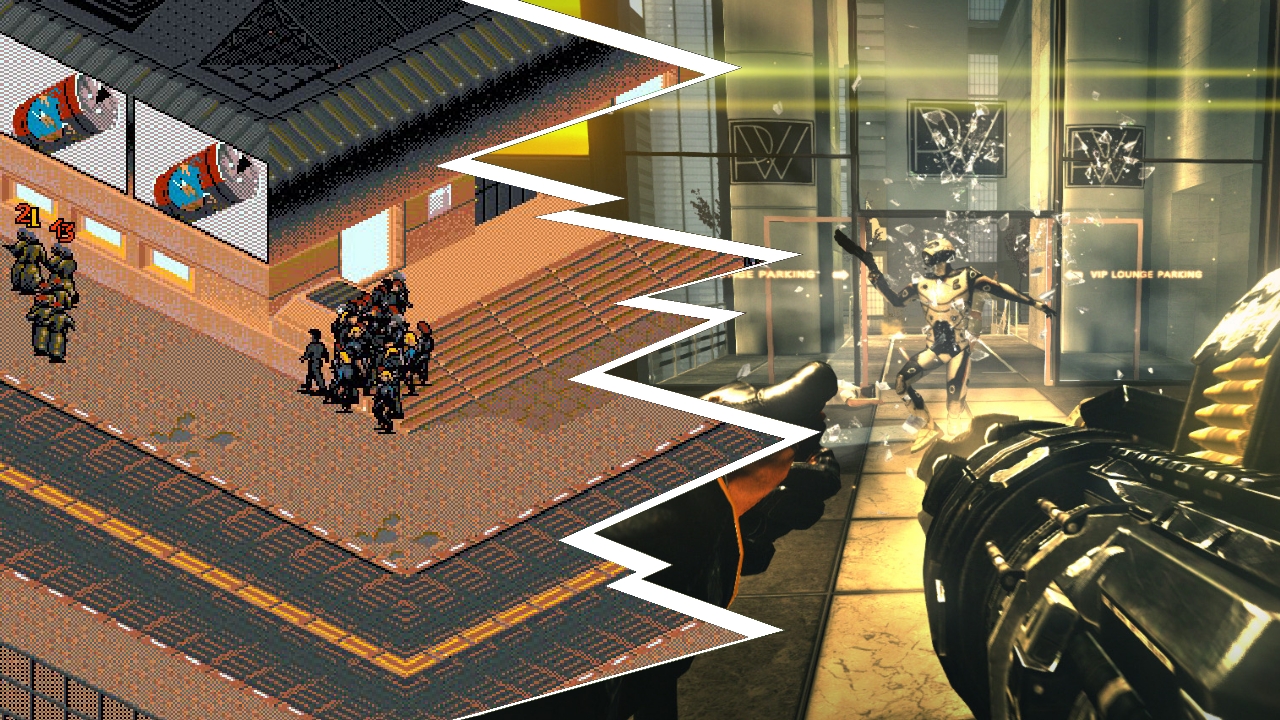
From this - A real-time tactical action title (say that six times when you're drunk), Syndicate appeared on a whole host of platforms back in the early '90s. Gameplay involves guiding four cybernetic agents around an isometric battlefield, attempting to infiltrate, assassinate, and/or detonate a series of increasing important targets. The player must also execute a wider stratagem, making certain that the team continues to receive necessary funds and upgrades. A bit like XCOM then, except that no one's waiting around for their turn.
To this - A solid first-person shooter title that was at turns both massively generic and occasionally inventive. Creative elements include an enemy-hacking mechanic, while the game's 'bullet sponge' bosses fared less well with critics.
A fitting sequel? - Given that the Syndicate universe isn't exactly the most unique of cyberpunk settings, EA probably felt comfortable utilising the license on this largely unrelated game. Sure, they may share a few common strands, but nothing that fans of the original games would miss in opting to skip it. Fortunately, the team behind the original titles are now hard at work on a new unofficial follow up named Satellite Rain, having earned well over 450,000 via a 2013 Kickstarter campaign.
Guilty Gear/Guilty Gear X & X2 to Guilty Gear 2: Overture
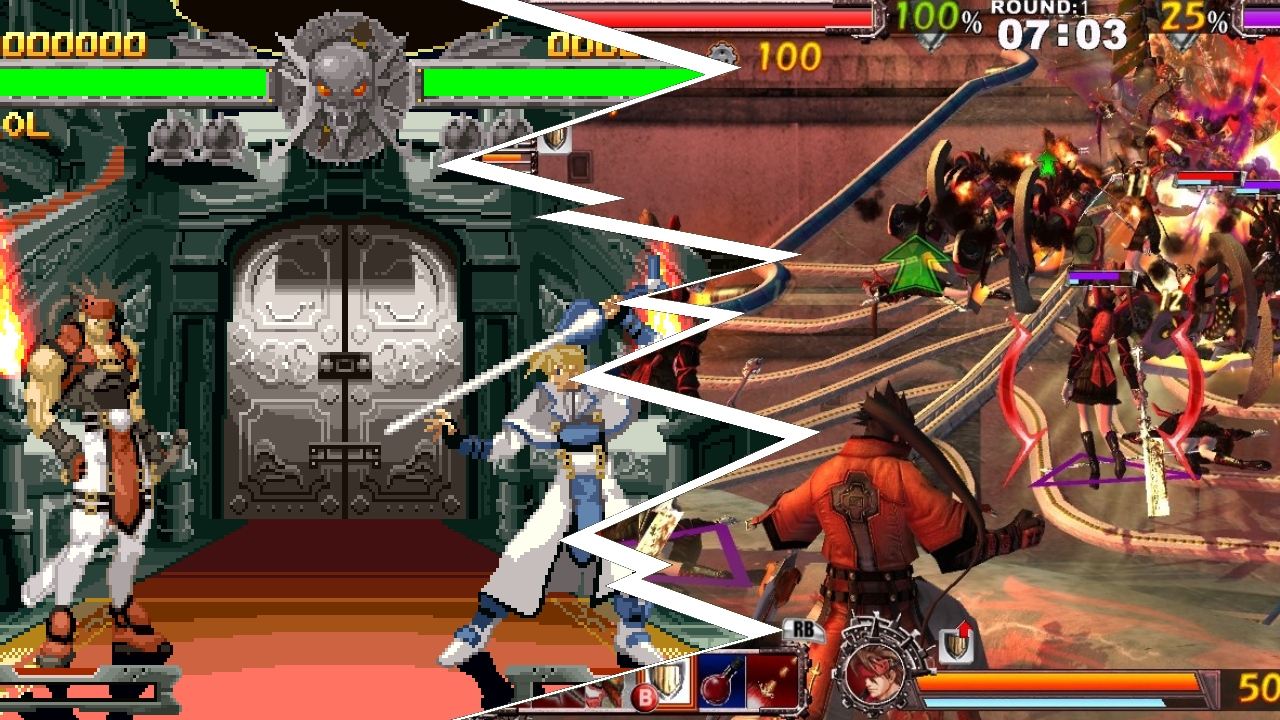
From this - A classic 2D fighter, Guilty Gear combined gorgeous graphics, killer characters, lightning fast gameplay and an inventive setting to become an enduring cult hit. The title spawned four direct sequels, the third of which marked a major departure from franchise norms.
To this - A 3D hack n' slash title, with assorted RTS mechanics thrown in. Think Dynasty Warriors, but with uber-stylish cyborg men. Overture scored poorly among critics, which may have led the team at Arc System Works to return the series' to its 2D fighting roots. Follow up Guilty Gear Xrd secured much more favourable reviews.
A fitting sequel? - The Guilty Gear franchise is no stranger to spin-offs, but crucially Overture is not among them. It's a bona fide mainline sequel, one that may well have signalled a fresh direction for the franchise had it been a success. Think of it as the Anti-Dynasty Warriors, attempting to follow along the same path, before mucking things up and crawling right back. Some familiar combat flourishes aside, Overture remains an unusually 'separate' entry in an otherwise consistent series.



